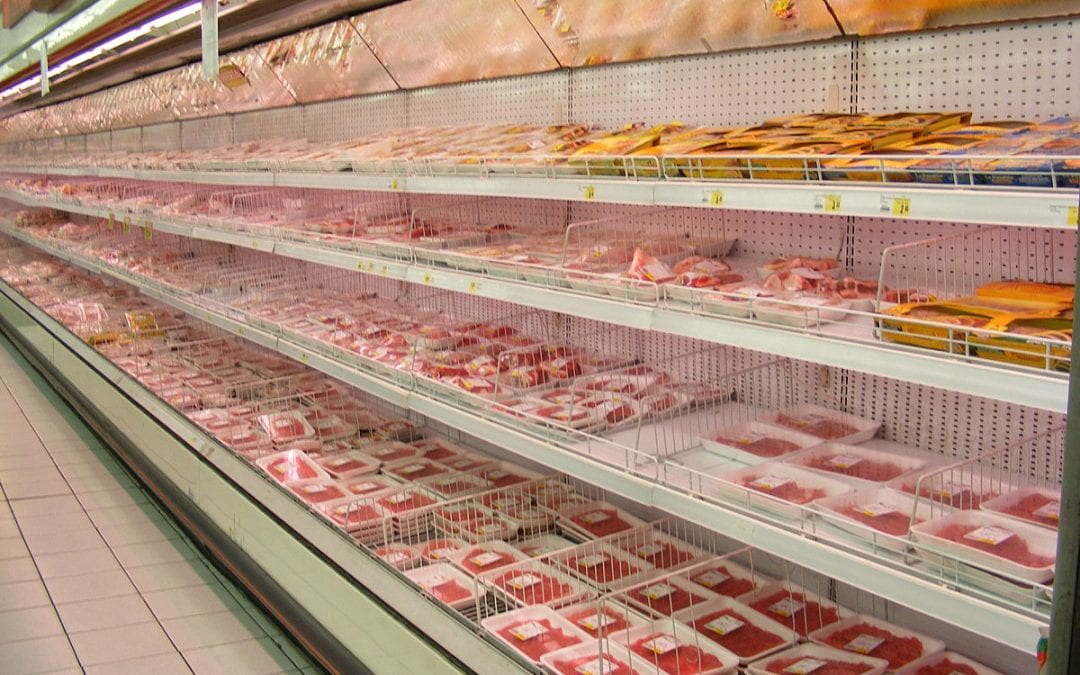By Mallory Haeflich, JHBL Staffer
In 2020, a restaurant in Singapore made headlines for being the first to serve chicken that came not from a farm or a slaughterhouse, but from a laboratory.[1] In the short time since then, lab-grown meat (also known by the more appetizing term ‘cultured meat’) has seemingly turned from a futuristic vision to a rapidly impending reality. Israel soon followed Singapore’s lead and approved the production of lab-grown meat. A factory, the first of its kind, designed to mass cultivate the meat, and a restaurant that functions as a test kitchen for consumer feedback on the meat, both opened in Israel in the last year.[2] Qatar is likely to be the next country to experience the product; an American company, Eat Just Inc., which cultivates chicken and eggs, will open a commercial facility there soon.[3]
The creation of lab-grown meat was first successfully accomplished in 2013 by Dutch researcher Mark Post.[4] Post had spent approximately two years growing muscle cells from a cow shoulder.[5] He presented his product to taste testers in burger form, to mixed reviews.[6] Despite not winning any culinary awards, the burger (which might be the priciest burger of all time, given that it cost about $325,000 to develop) represented the start of a new frontier in the food industry.[7]
Proponents of the development of lab-grown meat argue that it is the inevitable future.[8] The potential advantages are many—when looking at environmental and sustainability, public health, and ethical treatment of animals, lab-grown meat seems far superior to meat coming from animals.[9] Yet, there are also critics who deny that this type of science is ready to be a miracle for some of humanity’s largest problems—namely, that there are practical technological and financial barriers to lab-grown meat scaling quickly and widely.[10]
Two developments in the last two months in the U.S. indicate that the country is moving forward with cautious optimism about the future of lab-grown meat. First, the USDA granted $10 million over five years to Tufts University for the purpose of establishing the National Institute for Cellular Agriculture.[11] The new institute has been charged with the mission of developing lab-grown meat, as well as analyzing consumer reactions to the product, determining economic and environmental impacts, and assessing its nutrition.[12]
Second, in early September, the USDA published its advance notice of proposed rulemaking and is seeking comments regarding the labeling of meat and poultry that has been grown by cells.[13] This step, gathering public comments, is required by law pursuant to the Administrative Procedure Act when an agency begins the rulemaking process.[14] It allows for the public to vocalize opinions about regulations that might affect their lives or livelihoods. However, it also allows for powerful lobbyist groups to have a disproportionate influence on the lawmaking process. In this case, the USDA is specifically seeking comments about one aspect of the lab-grown meat issue: whether the product should be explicitly labeled and what information the label should include.[15]
Industry experts’ predictions about the timeline for getting lab-grown meat into our grocery stores vary greatly.[16] Given that the science might be a decade or longer away from widespread production and sale of the product, is there any value to the USDA (which is collaborating with the FDA and Food Safety and Inspection Service on this issue) beginning its rulemaking process now? Ultimately, the regulation of lab-grown meat will be an enormous undertaking, as it involves the oversight of several agencies, consideration of environmental concerns and economic impacts, and the powerful livestock lobbying industry. It is wise that the USDA is making a soft entry by funding research, as well as initiating the rulemaking process to get a pulse on consumer desires. As consumers, it will be important to stay attuned to how the USDA continues to treat lab-grown meat. For law students, this issue presents an interesting case study into how administrative law and legislation regulate a novel concept that other countries are handling differently, and how laws might evolve based on how public opinion and scientific research develops.
Mallory Haeflich is a third-year evening student at Suffolk University Law School. She graduated from Colgate University in 2013 with a degree in history and Middle Eastern studies and has since worked in education, non-profit management, and currently, as a paralegal for a maritime law firm.
Disclaimer: The views expressed in this blog are the views of the author alone and do not represent the views of JHBL or Suffolk University Law School.
Sources
[1] https://www.thomasnet.com/insights/lab-grown-meat-is-now-being-served-in-a-restaurant/
[2] https://newatlas.com/science/worlds-first-industrial-lab-grown-meat-facility-israel/; https://thechicken.kitchen
[3] https://www.bloomberg.com/news/articles/2021-08-31/eat-just-to-build-cultured-meat-plant-in-qatar-amid-global-push
[4] https://www.nytimes.com/2013/08/06/science/a-lab-grown-burger-gets-a-taste-test.html
[5] Id.
[6] Id.
[7] Id.
[8] https://www.nytimes.com/2021/04/24/opinion/climate-change-meatless-meat.html (representing the opinions of an advocate for lab-grown meat development, including for reasons of public health).
[9] https://www.nytimes.com/2021/10/14/opinion/climate-change-lab-grown-burgers.html (discussing the environmental impact of switching to lab-grown meat, and the barriers to that reality);
[10] https://thecounter.org/lab-grown-cultivated-meat-cost-at-scale/
[11] https://now.tufts.edu/articles/tufts-receives-10-million-grant-help-develop-cultivated-meat
[12] Id.
[13] https://www.usda.gov/media/press-releases/2021/09/02/usda-seeks-comments-labeling-meat-and-poultry-products-derived
[14] 5 U.S.C. § 553; https://www.federalregister.gov/uploads/2011/01/the_rulemaking_process.pdf
[15] https://www.usda.gov/media/press-releases/2021/09/02/usda-seeks-comments-labeling-meat-and-poultry-products-derived
[16] https://thecounter.org/lab-grown-cultivated-meat-cost-at-scale/ (arguing that even ten years is overly optimistic); https://www.forbes.com/sites/briankateman/2020/02/17/will-cultured-meat-soon-be-a-common-sight-in-supermarkets-across-the-globe/?sh=4beaf9d17c66
https://www.thomasnet.com/insights/lab-grown-meat-is-now-being-served-in-a-restaurant/
https://newatlas.com/science/worlds-first-industrial-lab-grown-meat-facility-israel/
https://www.bloomberg.com/news/articles/2021-08-31/eat-just-to-build-cultured-meat-plant-in-qatar-amid-global-push
https://now.tufts.edu/articles/tufts-receives-10-million-grant-help-develop-cultivated-meat
https://www.usda.gov/media/press-releases/2021/09/02/usda-seeks-comments-labeling-meat-and-poultry-products-derived
5 U.S.C. § 553
https://www.federalregister.gov/uploads/2011/01/the_rulemaking_process.pdf
https://www.forbes.com/sites/briankateman/2020/02/17/will-cultured-meat-soon-be-a-common-sight-in-supermarkets-across-the-globe/?sh=4beaf9d17c66

